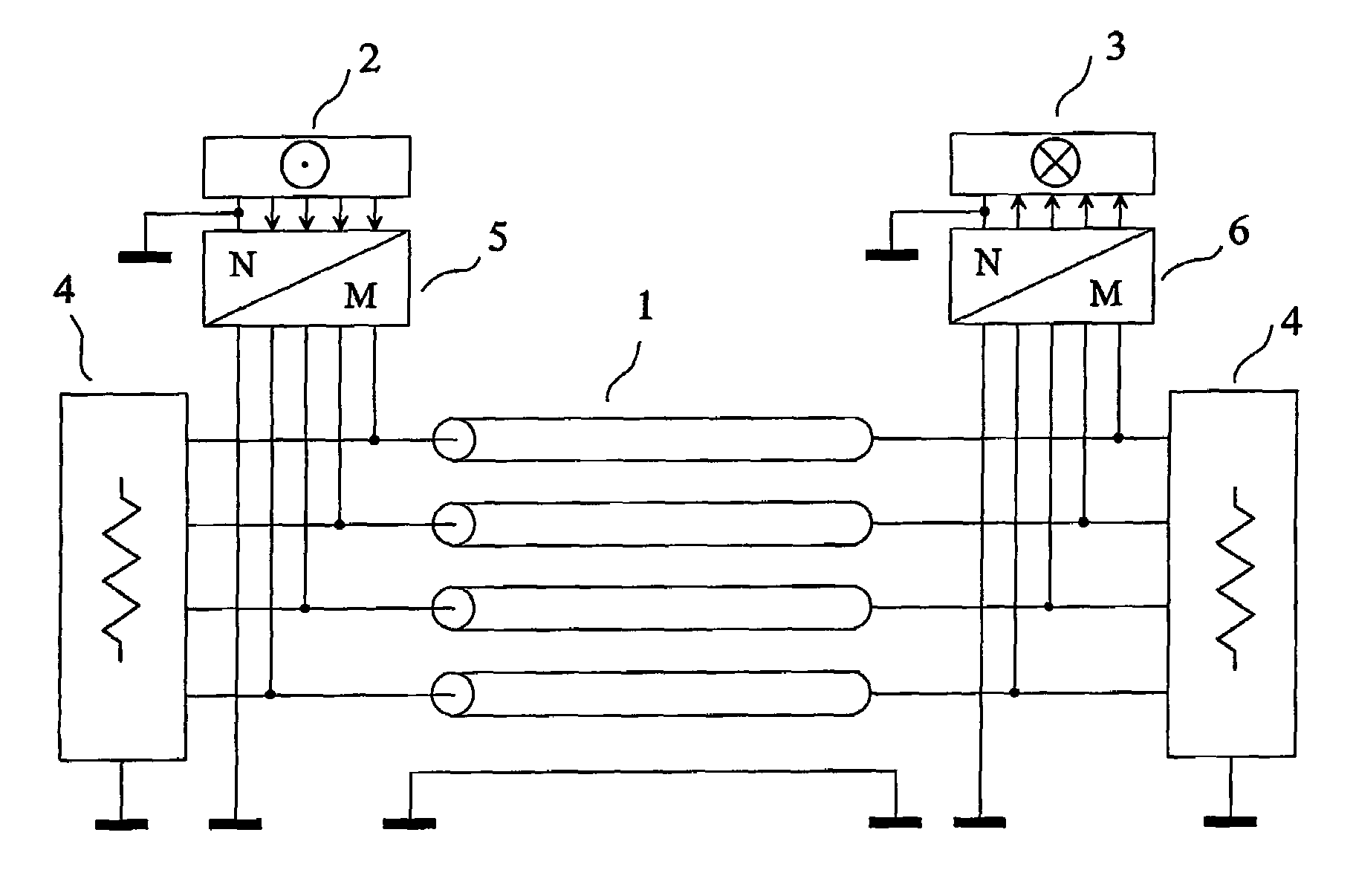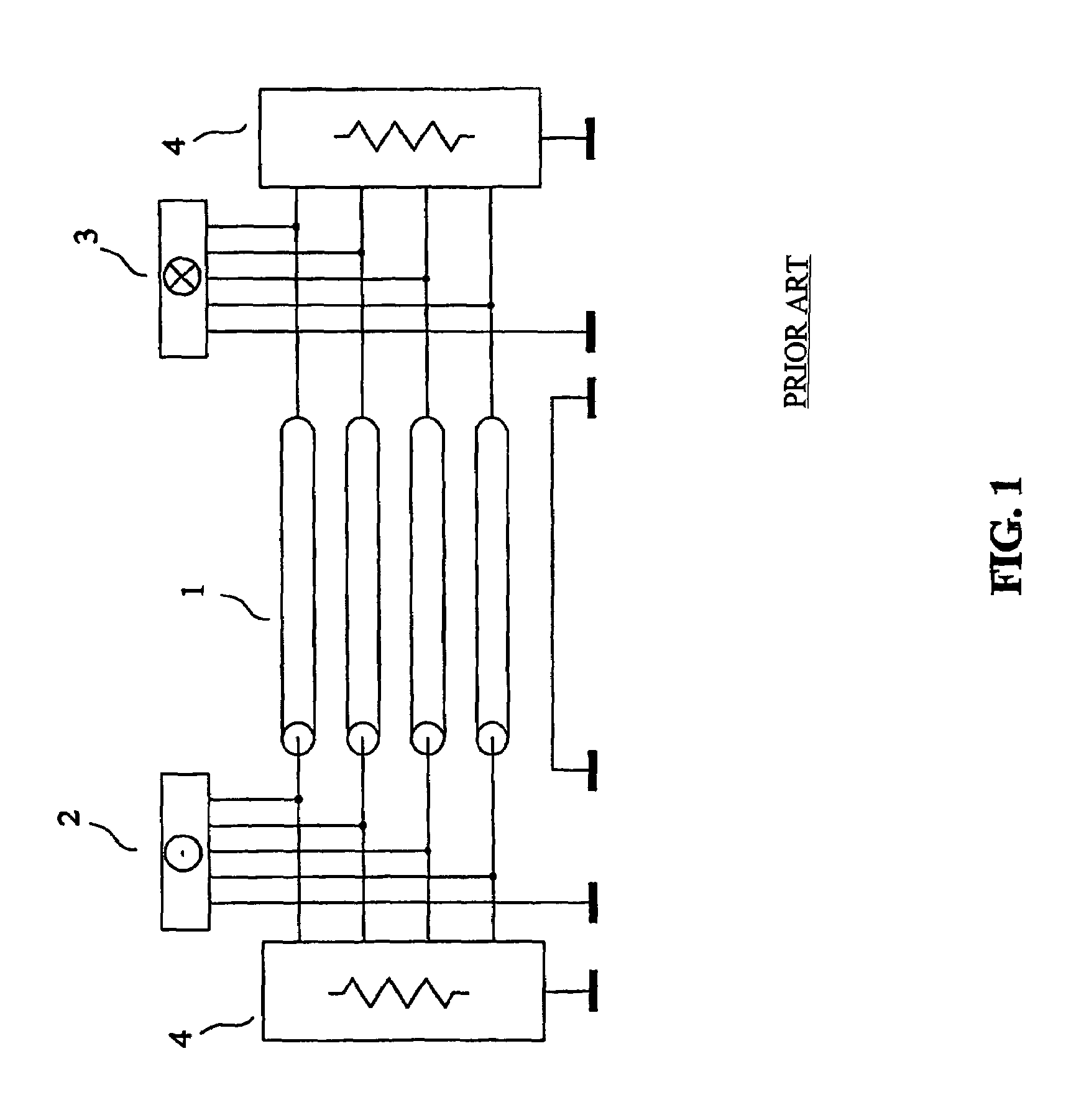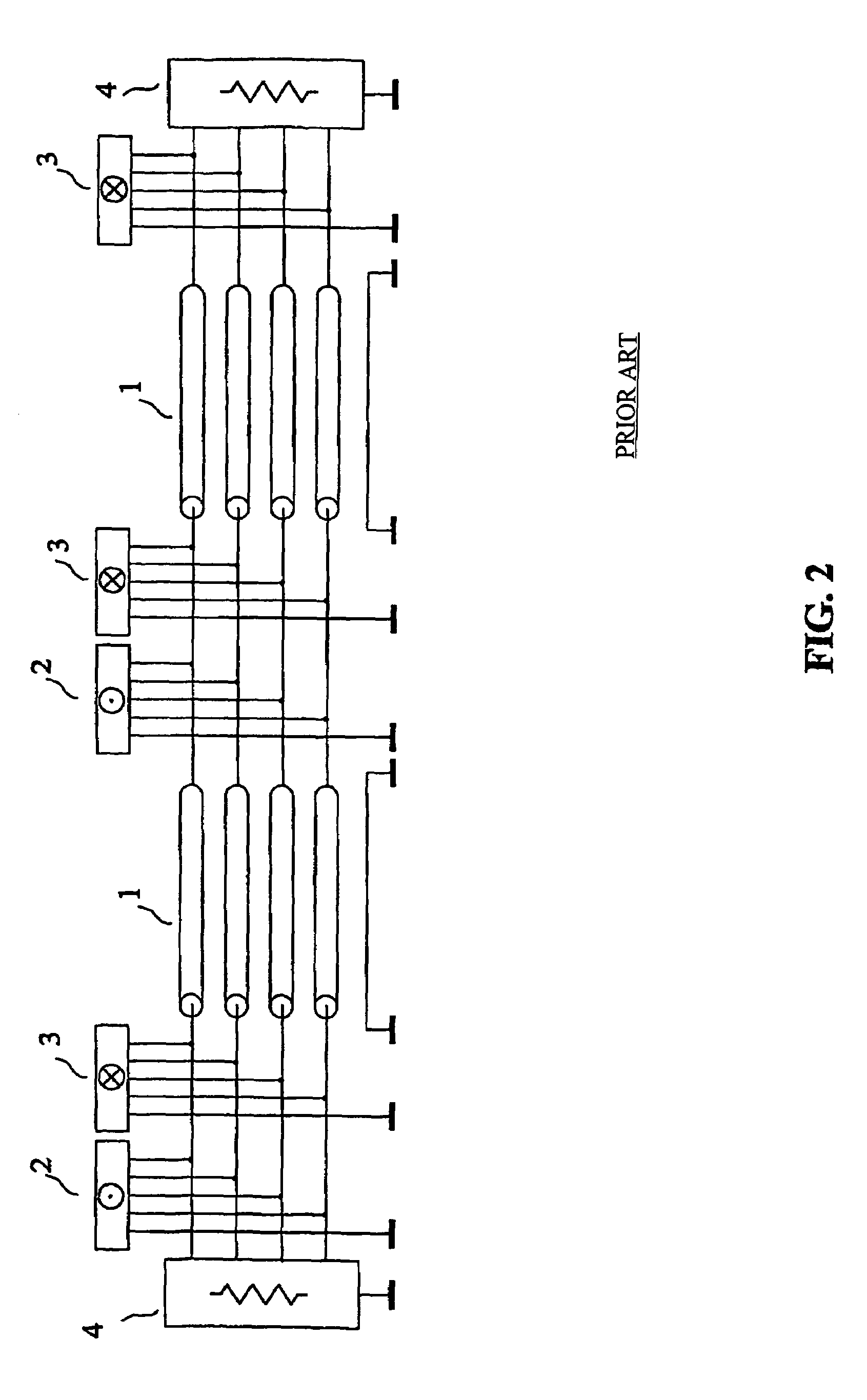Method and device for transmission with reduced crosstalk
a transmission device and crosstalk technology, applied in the field of methods and devices for transmission with reduced crosstalk, can solve the problems of not being able to describe all interconnections, not having specific physical characteristics, and being economically disadvantageous
- Summary
- Abstract
- Description
- Claims
- Application Information
AI Technical Summary
Benefits of technology
Problems solved by technology
Method used
Image
Examples
seventh embodiment
[0117]However, the connection of the transmitting circuits and / or the receiving circuits in parallel with the interconnection is not at all a characteristic of the invention. According to the invention, the transmitting circuit(s) and / or the receiving circuit(s) may be connected in series to the interconnection, in which case they must generally show a low series impedance to the interconnection, in order not to disturb the propagation of waves along the interconnection. a device of the invention, described below as an example, comprises a transmitting circuit connected in series to the interconnection.
[0118]A device of the invention may be such that the termination circuits, the transmitting circuit(s), and the receiving circuit(s) are without any part in common to any two of them.
[0119]Conversely, a device of the invention may be such that the termination circuits, the transmitting circuit(s), and the receiving circuit(s) are not without a part or parts common to any two of them. ...
first embodiment
[0126]FIG. 3 shows the invention;
second embodiment
[0127]FIG. 4 shows the invention (best mode);
PUM
 Login to View More
Login to View More Abstract
Description
Claims
Application Information
 Login to View More
Login to View More - R&D
- Intellectual Property
- Life Sciences
- Materials
- Tech Scout
- Unparalleled Data Quality
- Higher Quality Content
- 60% Fewer Hallucinations
Browse by: Latest US Patents, China's latest patents, Technical Efficacy Thesaurus, Application Domain, Technology Topic, Popular Technical Reports.
© 2025 PatSnap. All rights reserved.Legal|Privacy policy|Modern Slavery Act Transparency Statement|Sitemap|About US| Contact US: help@patsnap.com



